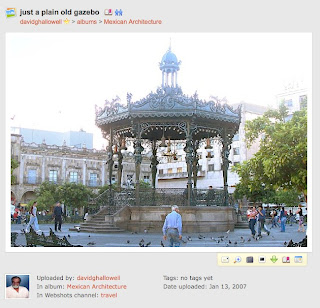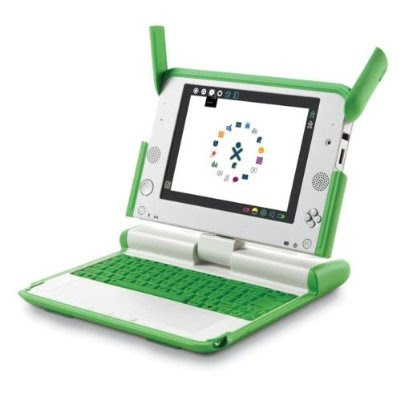
Sure that technology (and design by implication) have come a long way since then. It may seem that we're just catching up with old innovations or dreams, and we're just using the modern technology to make those dreams come true. Well... it may be true in part, but it
takes a lot of people and a series of small steps to get to a point when it is possible to make that dream come true. Englebart was
disappointed that it took so long for some of this ideas to "catch on". The next frontier would be the holographic interaction or maybe bionic gadget implants, I guess. So it's not that there are not enough dreams, it's just that it is not as simple as it may look like to make them come true.
We sure think that we have videoconferencing under control, just look how organized was Englebart's presentation 40 years ago.

Well... just a few weeks ago I received an invitation to watch "
Mission Critical Design: The role of user-centered design in developing technologies for public safety" a live podcast by
Bruce Claxton, senior director of design integration at Motorola. When I got the info to watch the podcast and it was based on windows media, I knew there were going to be problems to watch it on my mac. And I was right, I only heard a little bit of the introduction, then it was a technology dead end. Fortunately, the (quite helpful) PR liaison contact from
Fleishman-Hillard sent me an "off line" file... and I am really glad they did, because
Bruce's presentation was quite interesting to miss out.
It's always nice to have an insight into the design process of others, specially when it is a
multi-award winning design team like Motorola.

Of course he started with some information about the design team, how they share their ideas around the globe using rapid prototyping so the design process literally goes on 24/7 as it goes around the world. But that is not the only highlight of the story. I guess the main point is all that is involved to create what they called "
design that is second nature" i.e. products that works exactly as you expect it to work. Imagine a "normal" communication device... and think about the "small" usability errors like: "o
oops, I dialed the wrong number" or "
I tried to transfer the call, but turned it off by mistake", etc. etc. On an
emergency response system, you can't allow for those mistakes to happen, specially not when those mistakes are caused by a bad design. "
After all, in the world of the consumer, poor usability simply creates frustration. But in the public safety world, bad design is hazardous and can often be deadly."

So, how to make a product that is "
second nature"... and the answer is: by a serious implementation of a user centered design process. Members of the design team went even to the extreme of doing firefighter practices, so they could have a first hand experience of how the equipments are used in real life. Bruce explained with a lot of detail how they submerged themselfs into the user centered design process, to the point when
Moin Rahman, one of the ergonomists of the team,
developed a whole new area of research called
High Velocity Human Factors because the human reactions and cognitive behavior during stress situations are different than the reactions under non-stress situations. Wow! That shows how serious they are about the implementation of good ergonomics.

My question was about universal design (I was a bit frustrated with the fact that the podcast platform was "windows oriented") and it was quite interesting to learn how important is the center of gravity of the product, because it can affect the accessibility of the buttons. Think for example your TV remote... and how you sometimes have to move your hand in order to reach some basic buttons. In this case, second nature and good ergonomics means that no matter how quick, you just grab the object, and your fingers will reach perfectly the main buttons... thanks to a good center of gravity! So, it's not just how nice the buttons are placed on the surface... they have to consider the balance of weight of the components on the inside.
ciao
 I was searching for information about the "Casa Zuno"... when I found this picture of the Kiosk at Plaza de Armas in Guadalajara, and I was left speechless by the comment. If this is just a plain old gazeebo, then the statue of liberty should be called "just a big plain lighthouse". Other works from Fonderies d'Art du Val d'Osne are being auctioned for big bucks, like this neptune statue... so I guess a more appropriate title could be "a very expensive old gazeebo".
I was searching for information about the "Casa Zuno"... when I found this picture of the Kiosk at Plaza de Armas in Guadalajara, and I was left speechless by the comment. If this is just a plain old gazeebo, then the statue of liberty should be called "just a big plain lighthouse". Other works from Fonderies d'Art du Val d'Osne are being auctioned for big bucks, like this neptune statue... so I guess a more appropriate title could be "a very expensive old gazeebo".


































